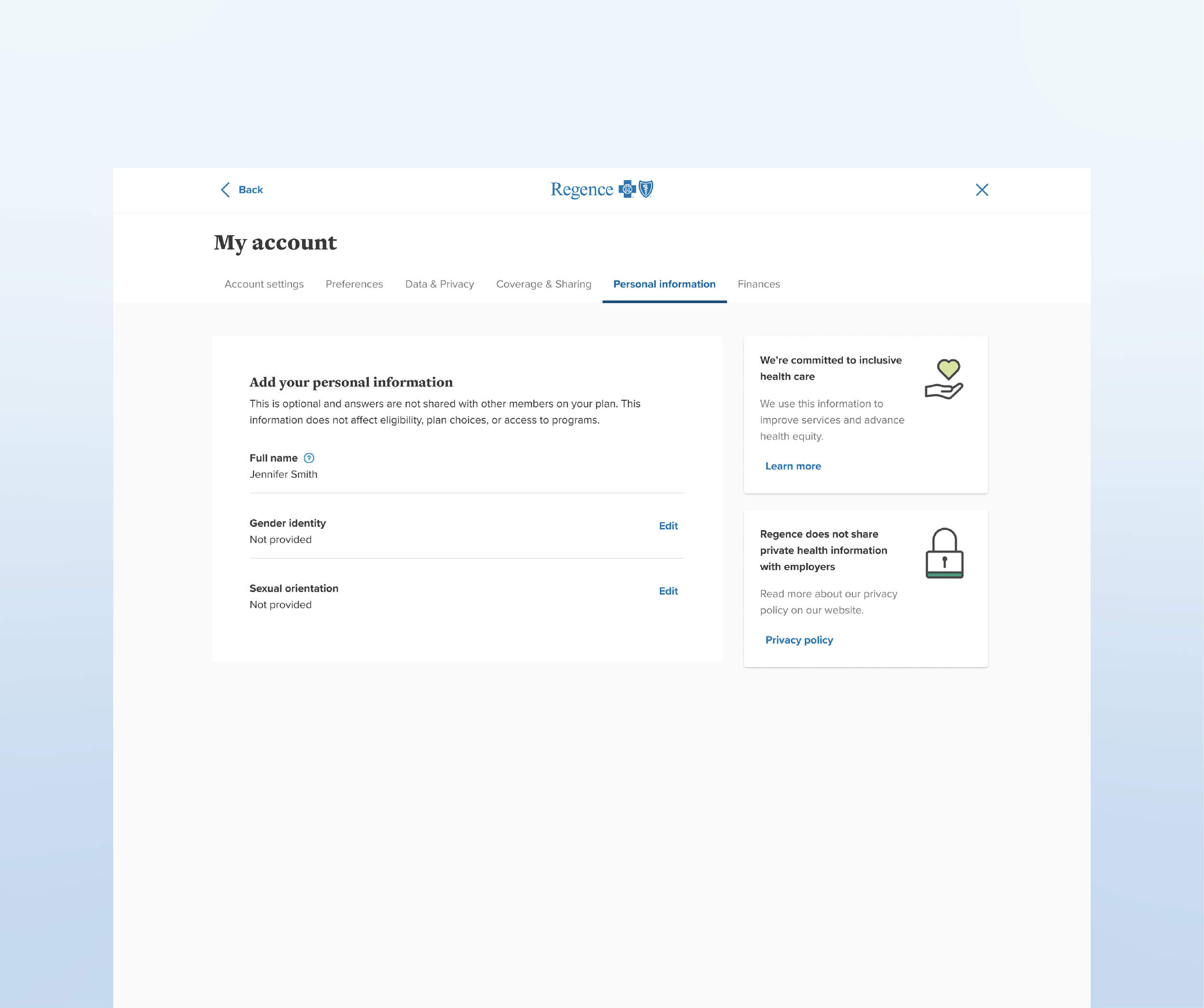Regence Health Equity Mandate
Transforming a regulatory government requirement into an opportunity to build trust and advance healthcare equity all at the same time.

Problem
As part of a new government healthcare mandate in Oregon, healthcare payors like Regence were required to collect Sexual Orientation and Gender Identity (SOGI) data to improve patient care and address disparities.
This presented me with a critical challenge:
How do I ask for this sensitive information in a way that feels safe, inclusive, and respectful to our members?
How can I ensure compliance while also prioritizing user trust?
How do I create an experience that meets accessibility standards and aligns with healthcare privacy laws (HIPAA)?
My Approach
I collaborated with our Researchers, Health Equity team, Privacy & Legal, and advocacy organization Human Rights Campaign (HRC) for this project.
My goal was to design an experience that prioritized clarity, trust, and inclusivity. The language needed to be transparent about why this information was being collected while also respecting user autonomy. Partnering with HRC was vital in crafting language that was affirming and inclusive of the LGBTQ+ community.
I first added a tab to members’ Account Settings titled “Personal Information.” I then focused on providing a clear explanation up front, ensuring that our members understood the purpose of the questions and not only how their data would be used, but how it would not be used in determination of eligibility and other programs. Accessibility was also a priority so I avoided overly complex medical terminology, and ensured the form was easy to navigate along with concise microcopy.
Most importantly, I built in flexibility by making the data collection skippable, giving users control over their participation.
Why this works
Inclusive terminology reflects real user identities
Avoids the term “other” as an option to avoid alienating users
Provides “A gender not listed here” and “An orientation not listed here” to ensure flexibility
Respects user privacy with a “Prefer not to say” choice
Kindly reassures users of healthcare privacy laws and family sharing policies
Uses plain language for readability and avoids complex phrasing
"diversity is the one true thing we all have in common " —churchill
Challenges
A challenge I came across was that the backend options for SOGI data did not directly align with the language HRC recommended. To solve this, I created a matrix for developers, ensuring that we displayed inclusive language and these selections accurately mapped to the limited options of our backend.
Opportunities:
As a systems thinker, I saw this new Personal Information tab as an opportunity to address a secondary concern Customer Support had raised: members were regularly calling in to change their legal names when who they actually needed to contact was their HR department. To solve this, I added a simple but effective tool tip on their Personal Information tab that guided them to do so.
Outcomes
The majority of users who completed the SOGI form said they understood why this information was being collected.
Increased participation rates from users due to the clear, trust-building language and privacy reminders
We met Oregon’s mandate requirements all while maintaining an empathetic, user-centered approach
Takeaways
Trust matters. Users are more likely to share sensitive data when they understand the “why.”
Language shapes experience. Thoughtful, inclusive phrasing makes all the difference.
Accessibility isn’t optional. Designing for all users ensures a truly inclusive experience for everyone.


